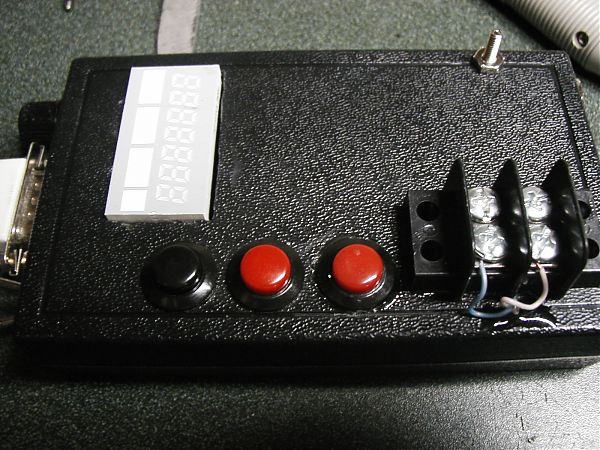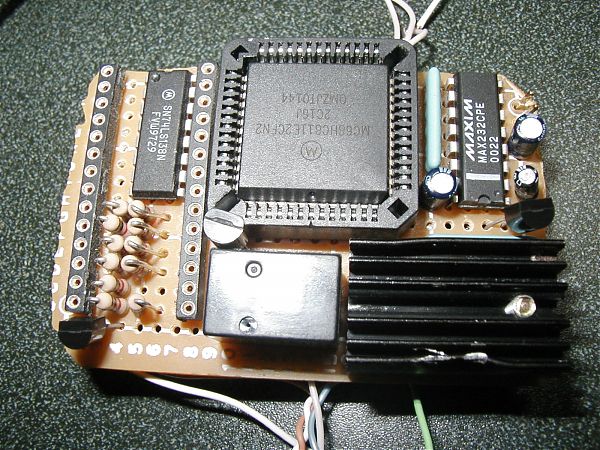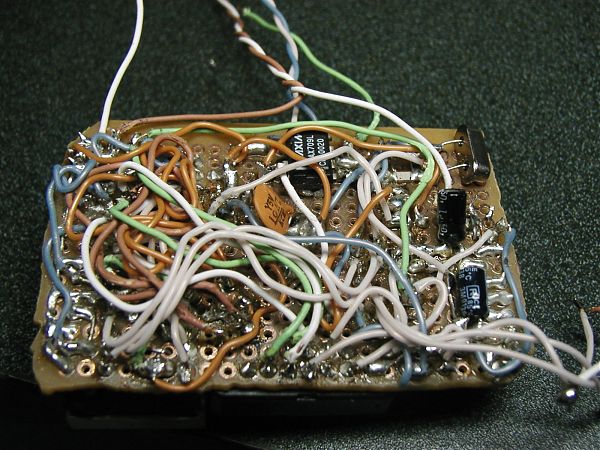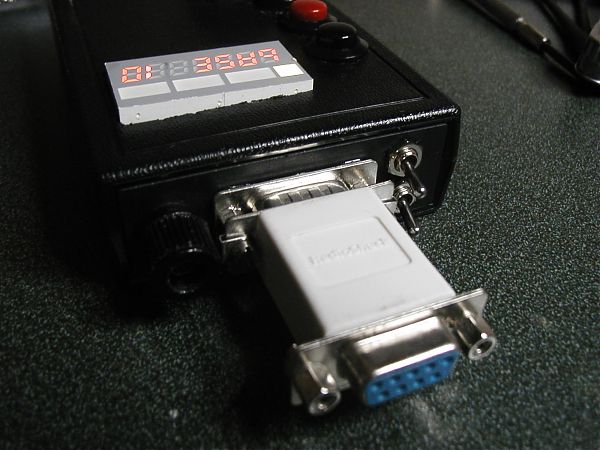The cycle tool
2004-08-30 22:42 by Ian
This was another HC11-based tool that I built for my own embedded work. But this one's job is to generate and count pulses, optionally triggering a relay for button-press simulation.
The buttons use a combination of long and short press to navigate the firmware UI, and there is a ground post to facilitate probe hookup.
I used this neat LED matrix that I yanked from my dad's old cellphone to be the display. It is multiplexed (obviously), and I couldn't find any documentation about pinouts, forward voltages, etc. But about 15-minutes of gentle probing was enough to reveal the secrets. As it turns out, there are eight groups of LEDs with common grounds. So I'm going to use a 74LS138 to handle the plane selection from a 3-bit code which I will present on the HC11 pins from the firmware. Considering the timing of things, the 3:8 demux chip should be able to handle the strain of a full-drive while scan is happening, but I wanted to give the firmware the option of crashing or freezing without risking burn-out (I don't have another display). So I used anode-side current limit resistors and just allow the display to be driven continuously.
I also have a special mode in the firmware that (with the help of an IR emitter attachment I made) allows me to emulate one of the "Personal Response System" infrared remotes that some classes at ASU use for attendance checks. I had to write some pulse-train capture firmware on the HC12 to read some samples from real PRS units, but once I figured out the field order and content, I was able to make my own PRS.
Top-surface (the dimensionally-critical surface) looks clean, and the layout compact.
I think I've decided that I need to teach myself some sort of CAD package for PCBs. Soldering all this to be compact was a nightmare, and took something like 6 hours. But: No smoke, and it fit in the casing.
Only two pins in this DB9 are used for what the port shape suggests. A few others are purposed for probe breakouts. But I built an adapter that isolates the comm lines.
Update 2024.07.30:I never really ended up using this tool for much. Mostly because it burned through 9V batteries at an embarrassing rate (I built it with a linear regulator). Button de-bounce was not quite adequate. And (for reasons I discovered a year after I finished it), the infrared TX timing was occasionally garbage, as it had high reliance on what ISRs were happening around it, and it didn't use a hardware timer.
But it was a fun use of the ancient Motorola cellphone display complex, and it still operates 21 years later.
There are now people drinking in bars that were born on the day I finished this machine, and I still remember how it works, and my dissatisfactions with it. For no reason obvious to me.
Previous: My first custom MediaServer
Next: USB DMX512 Controller




